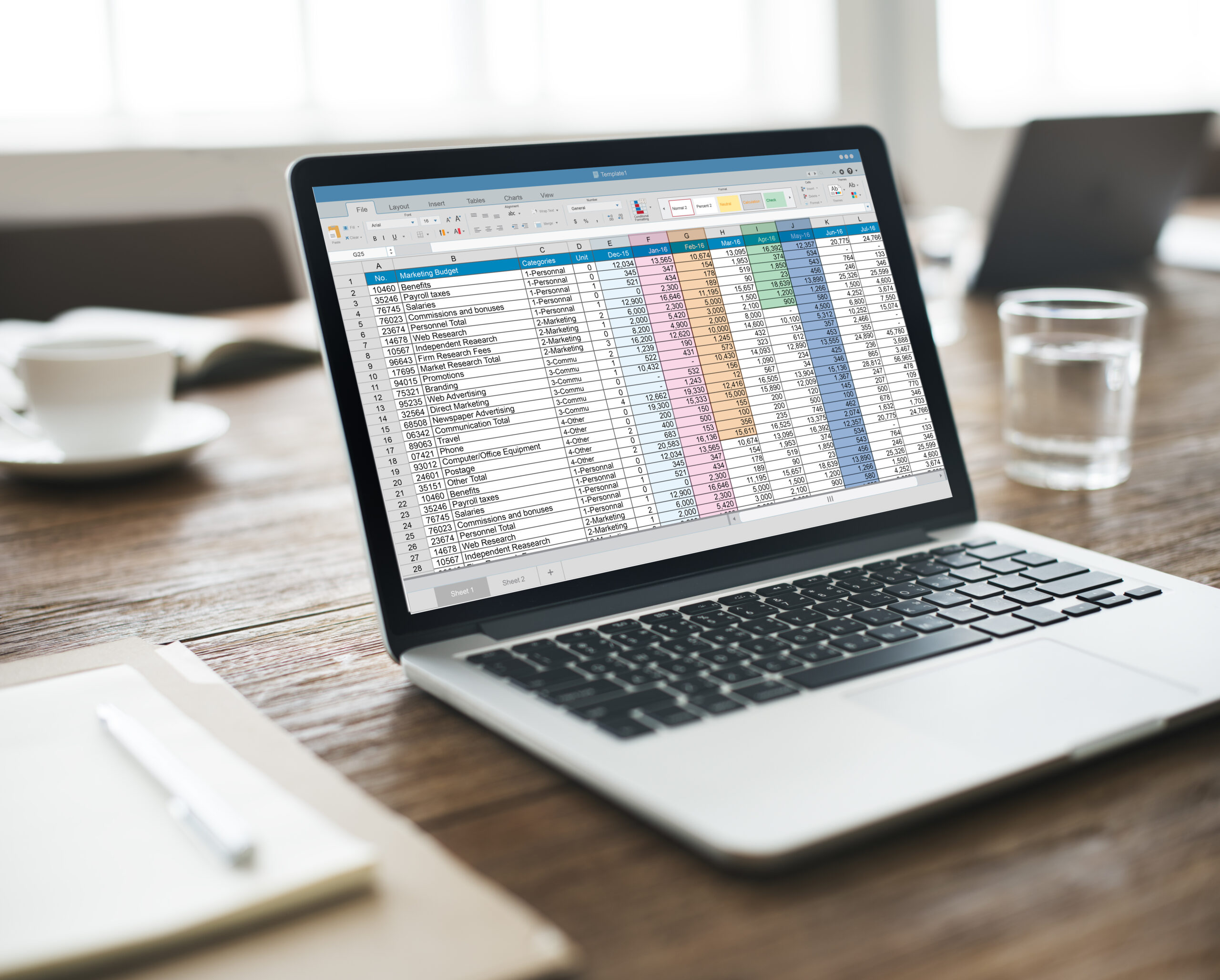For decades, spreadsheets have been the backbone of business reporting. They’re flexible, accessible, and familiar to almost every employee. From monthly financial summaries to ad-hoc project tracking, spreadsheets have powered decision-making in organizations large and small.
But as businesses collect more data and need faster, deeper insights, spreadsheets start to show their limits. That’s where custom dashboards come in. Dashboards transform raw data into visual, interactive tools for real-time analysis and monitoring.
Both spreadsheets and dashboards serve important roles—but they offer very different approaches to business insights. If you’re wondering whether it’s time to move beyond spreadsheets, this guide will help you weigh the trade-offs.
Spreadsheets: The Longtime Standard
Spreadsheets like Microsoft Excel and Google Sheets are the most widely used reporting tools in business. Their strengths are hard to ignore:
- Accessibility: Nearly everyone knows how to open and edit a spreadsheet.
- Flexibility: You can design your own formulas, tables, and charts for almost any type of report.
- Low Cost: Most companies already pay for Office 365 or Google Workspace, making spreadsheets effectively free.
- Portability: Reports can be emailed, shared, and stored with ease.
For startups and small businesses, spreadsheets are often the fastest way to get reporting in place. They allow teams to experiment with metrics, test different calculations, and manually consolidate data as needed.
Where Spreadsheets Fall Short
The very flexibility that makes spreadsheets useful can also create risks:
- Human Error
Studies estimate that 88% of spreadsheets contain errors. A misplaced decimal, broken formula, or copy-paste mistake can easily throw off critical reports. - Time-Consuming Updates
Spreadsheets are rarely live—they rely on manual data entry or periodic imports. That means your “report” may already be outdated by the time you review it. - Scalability Issues
As data grows, spreadsheets slow down. Complex workbooks with multiple sheets, formulas, and macros become unwieldy and error-prone. - Version Control Problems
When multiple team members update spreadsheets, keeping track of the “official” version becomes a challenge. - Limited Visualization
While Excel and Sheets offer charts, they pale in comparison to interactive dashboards that let users drill down and filter in real time.
For businesses with growing data demands, spreadsheets can start to act as a bottleneck rather than an enabler.
Custom Dashboards: The Modern Alternative
Custom dashboards are interactive tools that pull data directly from your systems—CRMs, ERPs, finance tools, marketing platforms, and more—and present it in a visual, centralized format.
Instead of manually updating rows and columns, dashboards automatically refresh as new data flows in. They’re designed to give decision-makers clarity at a glance and the ability to drill deeper when needed.
The Strengths of Dashboards
- Real-Time Data
Dashboards connect directly to live data sources, giving you up-to-the-minute visibility without manual updates. - Clarity and Focus
Dashboards highlight the KPIs that matter most, using charts, graphs, and alerts instead of dense tables. - Interactivity
Users can filter, slice, and drill down into the data, exploring questions without creating new reports. - Collaboration and Consistency
A single dashboard serves as the “source of truth,” eliminating version confusion and duplicated effort. - Scalability
Dashboards handle large datasets far better than spreadsheets, making them ideal as businesses expand. - Integration
Custom dashboards can unify multiple systems—finance, sales, marketing, operations—into one cohesive view.
Potential Challenges
Dashboards aren’t perfect for every situation. Challenges include:
- Upfront Investment: Building a custom dashboard requires time, development, and budget.
- Learning Curve: Teams may need training to navigate dashboards effectively.
- Less Flexibility for One-Offs: Spreadsheets are still better for ad-hoc analysis or quick calculations outside regular workflows.
In other words, dashboards excel at structured, repeatable insights, while spreadsheets are better for unstructured exploration.
Direct Comparison: Spreadsheets vs Dashboards
Speed of Setup
- Spreadsheets: Immediate. Anyone can create a report in minutes.
- Dashboards: Requires development and integration but pays off long-term.
Accuracy
- Spreadsheets: Prone to manual errors and inconsistent formulas.
- Dashboards: Automated data pulls reduce error risk significantly.
Scalability
- Spreadsheets: Struggle with large datasets.
- Dashboards: Designed to handle scale and multiple users.
Collaboration
- Spreadsheets: Multiple editors create version control problems.
- Dashboards: One shared view ensures everyone sees the same data.
Visualization
- Spreadsheets: Limited to static charts and graphs.
- Dashboards: Rich, interactive visuals with filters, alerts, and drill-downs.
Cost
- Spreadsheets: Minimal; included in existing office software.
- Dashboards: Higher upfront cost, but better long-term ROI as reporting demands grow.
Which One Provides Better Business Insights?
The answer depends on your stage of growth and reporting needs.
- For startups and small businesses, spreadsheets often provide enough functionality. They’re easy to spin up and flexible for quick reporting.
- For growing and mid-sized businesses, spreadsheets become time sinks and liability risks. Dashboards offer the clarity and scalability needed to keep pace.
- For enterprises, dashboards are essential. They provide a centralized, reliable source of truth across departments and functions.
Ultimately, dashboards tend to provide better insights because they offer real-time data, stronger visualization, and a single source of truth. But spreadsheets remain useful for ad-hoc, exploratory analysis.
The Hybrid Approach
Many businesses benefit from using both. Dashboards provide centralized, high-level insights, while spreadsheets allow teams to experiment, dig deeper, or create one-off models.
For example:
- Executives use dashboards for KPI monitoring.
- Finance teams export dashboard data to spreadsheets for forecasting.
- Analysts prototype metrics in spreadsheets before formalizing them in dashboards.
This hybrid model ensures flexibility without sacrificing accuracy or scalability.
When to Transition from Spreadsheets to Dashboards
You know it’s time to consider dashboards when:
- You’re spending more time maintaining spreadsheets than analyzing them.
- Reports are delayed because data consolidation is manual.
- Errors or inconsistencies are eroding trust in the numbers.
- Multiple teams are duplicating efforts instead of working from one shared source.
- You need real-time monitoring instead of static snapshots.
At that stage, investing in a custom dashboard isn’t just a technology upgrade—it’s a strategic shift toward data-driven decision-making.
Choose the Tool That Matches Your Needs
Spreadsheets and dashboards both have their place in modern business. Spreadsheets offer flexibility and familiarity, making them excellent for quick analysis and prototyping. Custom dashboards deliver reliability, clarity, and scalability, making them essential for organizations serious about data-driven growth.
The real question isn’t which tool is universally “better”—it’s which tool better supports your business right now. And for many businesses looking to scale, the answer increasingly points toward dashboards.



